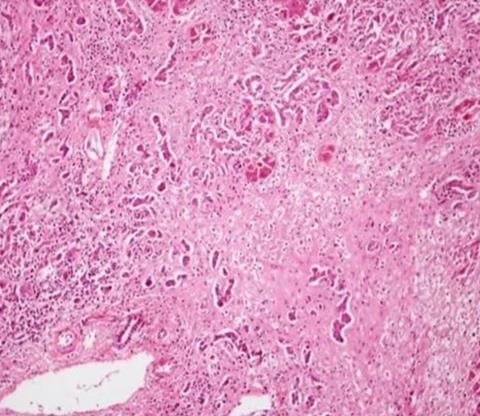Chronic hepatitis B (CHB) remains a significant global health burden, with existing therapies including nucleos(t)ide analogs, interferon, siRNA, and therapeutic vaccines demonstrating limited success in achieving functional cure and often resulting in viral rebound after treatment discontinuation.

Addressing this challenge, Professor Zhu’s research team at the Institute of Microbiology, Chinese Academy of Sciences has developed an innovative combination therapy. Their approach synergistically combines their proprietary ferritin nanoparticle-preS1 (Ferritin-NP-preS1) therapeutic vaccine with a preclinically validated HBV-specific siRNA. This dual-targeted strategy represents a significant advancement in the pursuit of durable CHB functional cure.
READ MORE: Hepatitis B: new rapid diagnostic test to halt mother-to-child transmission
READ MORE: New study reveals a safer alternative for long-term hepatitis B treatment
The research team employed an AAV-HBV1.3-infected HBV-carrier mouse model to evaluate their therapeutic strategy. A siRNA agent AD-66810 was administered biweekly for three doses, and the Ferritin-NP-preS1 vaccine was administered biweekly from day 14 for four doses. Serum samples were collected and analyzed until day 393.
The findings
HBsAg serum clearance: Ferritin-NP-preS1 monotherapy resulted in HBsAg serum clearance in about 62.5% of mice at the end point; siRNA monotherapy induced transient antigen reduction but rapid rebound post-cessation. Combination therapy achieved HBsAg serum clearance in 100% of mice, which was sustained for 11 months by the end of the study.
HBsAb generation: Ferritin-NP-preS1 monotherapy generated HBsAb in about 37.5% of mice at the end point; siRNA rarely induced HBsAb. Combination therapy generated HBsAb in 80% of mice, with HBsAb levels sustained for at least 11 months until the end of the study.
In addition, this study also showed that combination therapy resulted in efficient seroconversion from preS1 to anti-preS1, and approximately 70% clearance rates for serum HBV DNA and liver HBcAg.
These compelling results reported in this study set the foundation for a promising strategy for CHB functional cure, encouraging researchers to pursue further clinical validation.







No comments yet